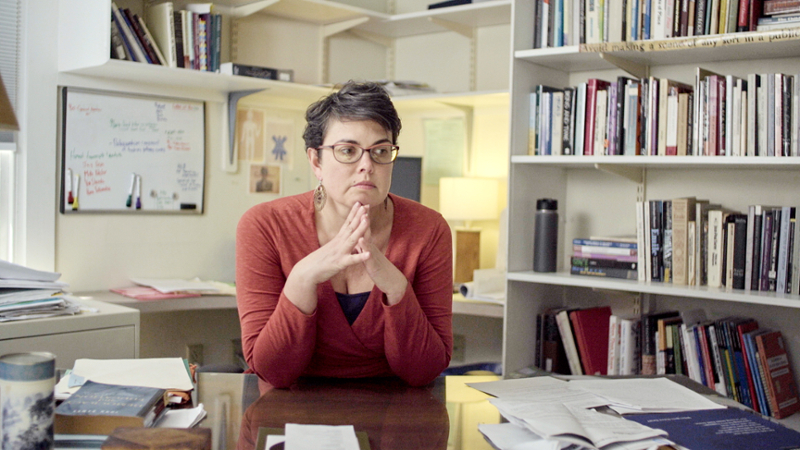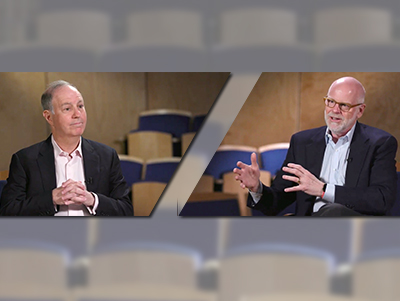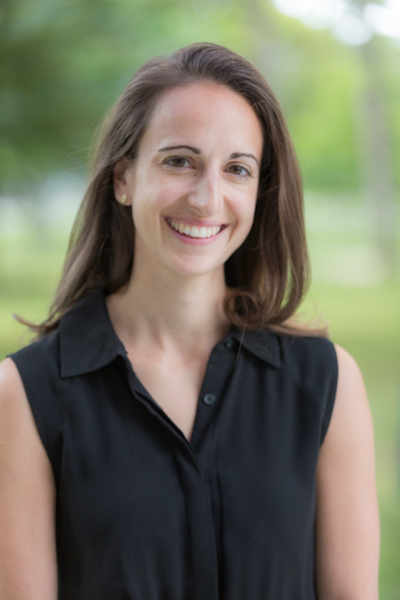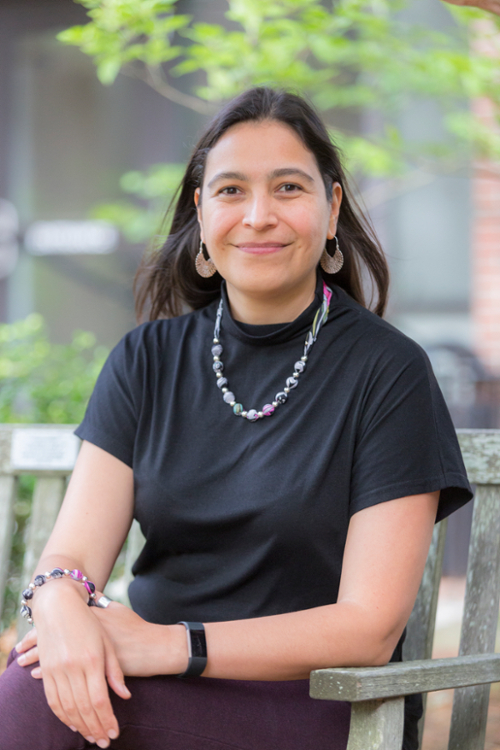"Opening of the College," Convocation 2015, Bowdoin President Clayton Rose
“Opening of the College”
Bowdoin President Clayton Rose
Bowdoin 2015 Convocation
Good afternoon.
The conclusion of our last academic year was busy and eventful, with graduation, an amazing Reunion Weekend and the retirement of Barry Mills as Bowdoin’s 14th President. And we have had a busy summer. Let me touch quickly on some of what has been going on. Over 300 students worked on research projects and other work on campus, and those not here were involved with internships or study around the world. Faculty have been working on their scholarship, as well as course refinement and course development. Twenty-nine faculty have left on sabbatical, to dive deeply into areas of interest, think anew, and collaborate with other scholars. Nineteen members of the faculty have returned from a year away, intellectually refreshed. In addition, 33 new faculty have arrived — many, I believe, are here this afternoon — joining a community of great teachers and scholars. Welcome, we are delighted you are here.
The Museum opened its exhibit, Night Vision, which has received rave reviews nationally and drawn many to Brunswick. And there has been a remarkable amount of work done around campus in the last few months to maintain and enhance our physical plant and prepare the campus for this academic year. We owe much to Bowdoin’s remarkable staff. And, we have exactly 500 new first year students, one transfer student and two Harpswell Scholars, most here with us — and we are thrilled that you have joined the Bowdoin community.
Julianne and I have settled into the house and into Brunswick, and I have begun my work at the College, and in particular have engaged in many discussions with faculty, students, staff, alumni and trustees about our aspirations, challenges and the life and mission of Bowdoin. This work has been energizing, great fun and immensely useful in beginning to consider the possibilities ahead. And it has made me even more optimistic and ambitious about the future of our College as a vibrant, deeply relevant liberal arts institution.
I would like to offer you thoughts today on two subjects – one about Bowdoin’s present and the other about our future.
I will start with our present, and the issue of race. Many at Bowdoin, as well as across our country and elsewhere, contend with challenges that come with aspects of their identity — racial, ethnic, religious, gender, sexual orientation, political persuasions, and socio-economic status among them. Each is important. But it is because of the events in this country that began last year and have continued throughout this summer, and the implications of these events for our campus, that today I am going to speak to race.
Fifty-one years ago, the Reverend Dr. Martin Luther King Jr. visited Bowdoin College and spoke to the campus and community at First Parish Church only a few yards from here. This was a year after his iconic “I Have a Dream” speech in Washington, D.C., and a year before “Bloody Sunday” on the Pettus Bridge in Selma. He came at the invitation of the Bowdoin Political Forum and made the case for the necessity of the civil rights legislation that was working its way through Congress and that would become the Civil Rights Act of 1964. He spoke of both the progress made on segregation and the significant work that remained. And it is in large measure because of Dr. King’s transcendent leadership that we have made so much progress over the past 51 years on correcting the wrongs of racial discrimination and in creating a more inclusive society.
So, why do I raise this issue today?
It is to Dr. King’s point made here in 1964 that much remains to be done; we have not yet erased race as a meaningful divide in our society. And the events and political discourse of the past year and summer suggest that we may have taken a few steps backwards on the journey to Dr. King’s mountaintop.
Since the end of the last academic year, much has happened in America with regard to the issue of race — the massacre in Charleston, debates about the Confederate flag, and the shooting death in Cincinnati of Samuel Dubose, among them. These events are stark reminders that race can create different opportunities and experiences for those of color, different from those of white Americans. And closer to home, we understand that the events of the last year and the summer can make more raw this differing experience for our students, faculty and staff of color as they as they go about their work and lives here at Bowdoin.
Bowdoin has an enormous amount to be proud of in our history with respect to the struggle for racial equality. From Harriett Beecher Stowe, Joshua Chamberlain, and Oliver Otis Howard, to the many Bowdoin men who served the Union in the Civil War, to John Brown Russwurm, to Dr. King’s visit and, more recently, the work of Geoffrey Canada, among many notable examples. And we have proudly witnessed recent graduates engage this issue and exert their leadership. Bowdoin has also made great progress over the past few decades in creating much greater diversity on our campus. This work and our history set a high bar for us to continue to make a difference in the struggle to eliminate the effects of racial differences in determining opportunities available in American society and in shaping the experiences of our students, staff, faculty and alumni.
The long struggle suggests that there are no easy answers to the issues that attend race in America, but we can each make some difference and try to live up to our history. For those of us not of color, we can understand that race still does matter, not just as the social phenomenon we read about or watch on the news, but in the life experiences of our friends, classmates, and colleagues. For all of us, rather than succumb to the temptation to shy away from engaging for fear of saying the wrong thing, we can, in the spirit of goodwill, exercise a genuine curiosity to learn about one another, and to share our histories and our identities. We can strive to understand what makes us each unique, help others understand who we are, and celebrate our differences. We can also rally around and support those in our community when their race becomes an issue because of some national event or a personal attack.
We can make a difference with our academic mission. As a faculty, we can continue to rigorously and thoroughly prepare our students to engage the issues of race and generate scholarship that addresses the important questions from moral, cultural, literary, political, economic, historical and psychological perspectives, among others. In their classwork and research, our students can continue to confront the hard questions, undertake rigorous analysis, and tackle the complexities of the problem.
We cannot shy away because the issues, questions or language make us uncomfortable; to do so shortchanges the creation of knowledge and learning and the ability to have impact. But, by doing these things, we create knowledge that can be used to blunt the myths and half-truths and send into the world students who can effectively engage the social discourse and political decision-making around race because they will have command of the issues and data, and they will be analytical, persuasive and courageous.
Sadly, vexingly, race remains an issue in America. It is well within our ability, and part of who we are at Bowdoin, to make some difference, quite personally, for those classmates, colleagues and friends where race affects their experience, and more broadly through our core intellectual work. We must continue to do both.
Let me now turn to our future. Bowdoin is so strong today across virtually every dimension. Bowdoin has a superb faculty, amazing students, a dedicated staff, and devoted alumni. It is among the most respected educational institutions in the world. Our curriculum is rigorous and demanding, and there is a deeply engrained culture of excellence in all that we do. For generations Bowdoin has successfully prepared its students to live lives of deep meaning, enjoy vocational success and serve the Common Good.
It took great effort to get here, and so many in the Bowdoin community have worked hard to make this a reality. I want to particularly acknowledge what a remarkable job Barry Mills did over the past 14 years leading Bowdoin to this place. Because of his work, we are positioned to be ambitious in considering our future. And for this we owe him our deepest gratitude.
Now, Bowdoin must continue to change.
There are external pressures, questions and challenges that will, without doubt, affect what we do and how we do it. These include the debate in some quarters about the value of the liberal arts, the uses of technology, the cost of our education, globalization, and the substantial threats to our natural and social worlds.
Institutions that do not change get marginalized, wither, and even die. We have an obligation to honor the work of those who came before, who worked so hard to bring us here, to keep Bowdoin strong in the face of these issues and questions. But, more importantly, we have a remarkable opportunity to focus our attention and resources on the medium-to-longer term, to determine what we should be doing and how we should be doing it, in order to remain a deeply relevant preeminent liberal arts college and a leader in American higher education.
This is work we will do together — the faculty, as well as trustees, alumni, staff and students. My conversations with the faculty and broader Bowdoin community during much of this year will inform a process that we will put in place to consider the way forward. It will be a process where the many perspectives, insights and interests of our community will be discussed. And while not an exercise in consensus, this will be an effort to ensure that all voices are heard.
It will require that we ask essential questions of ourselves, even if they are unsettling. Questions like: What makes us unique among liberal arts colleges, and how should that be sustained or enhanced? What should a Bowdoin liberal arts curriculum be in five years, for the next 10-15? In particular, what will it mean to be “liberally educated” at Bowdoin in the future? What is great teaching? What is profound learning? What makes both possible? What roles should athletic, cultural, service, and other experiences play in complementing the intellectual engagement here? What role should technology play in both what we teach and how we teach?
We are not interested in change for change’s sake, but rather to be bold and deeply ambitious and to grasp the opportunity we have to reimagine and strengthen the things we do and to do new things.
We also have an obligation to remain true to our core — to what makes Bowdoin special, including living a set of values shaped by the Common Good, excellence in both our teaching and scholarship, and a deep connection to Maine. Those who graduated from Bowdoin in 1806, 1906 and 2006 should recognize their College in 2026.
This opportunity to shape our future is incredibly exciting.
Finally, let me conclude by saying how deeply honored I am to be serving as Bowdoin’s 15th President. Julianne and I are thrilled to have joined this amazing community, and I am energized by the opportunities and challenges that await us. As our eighth president Casey Sills often said, “Bowdoin’s best days are ahead of it.”
My hope is that for each of you this is a year filled with deeply satisfying work, that it is a year of continued discovery, that you experience the joy of family, friends and the bonds of the Bowdoin community, and that is one of good health. I now declare the College to be in session.



